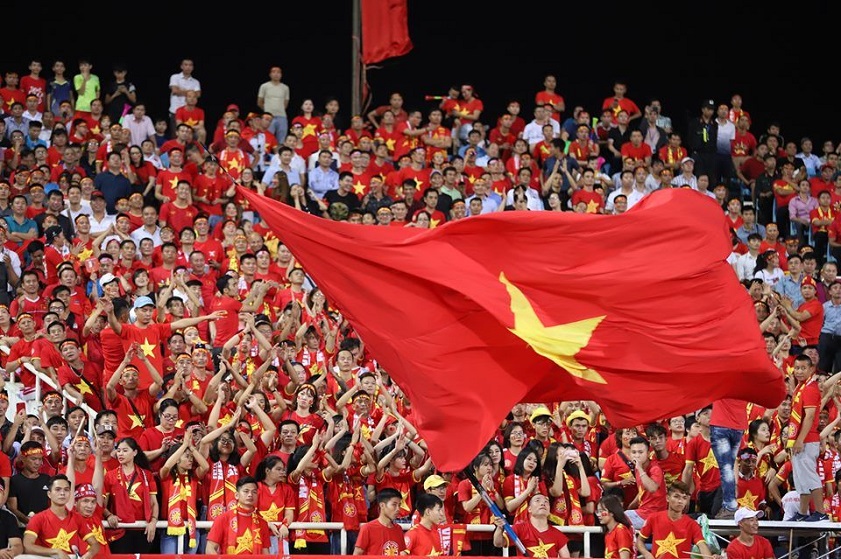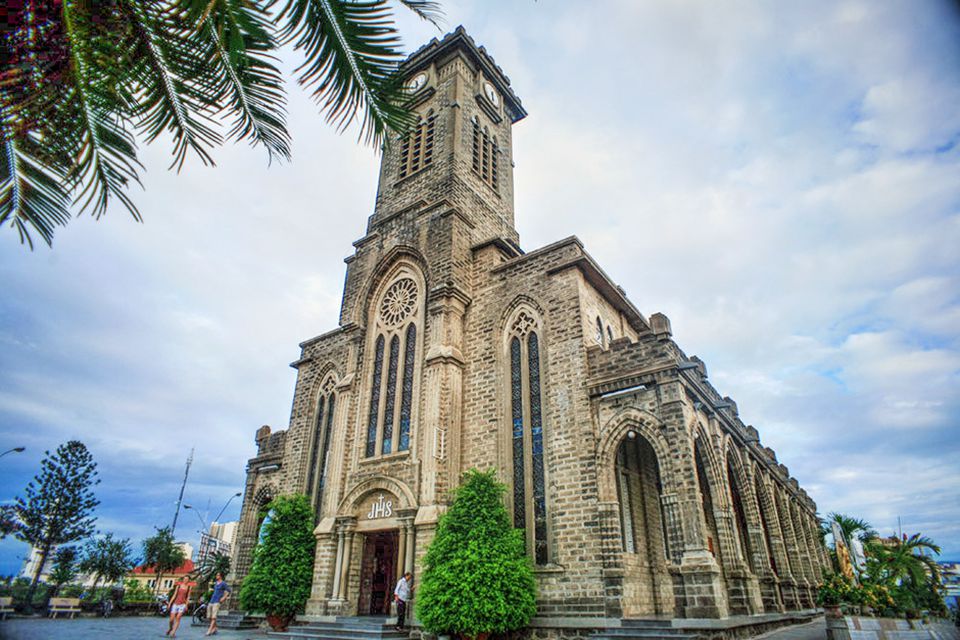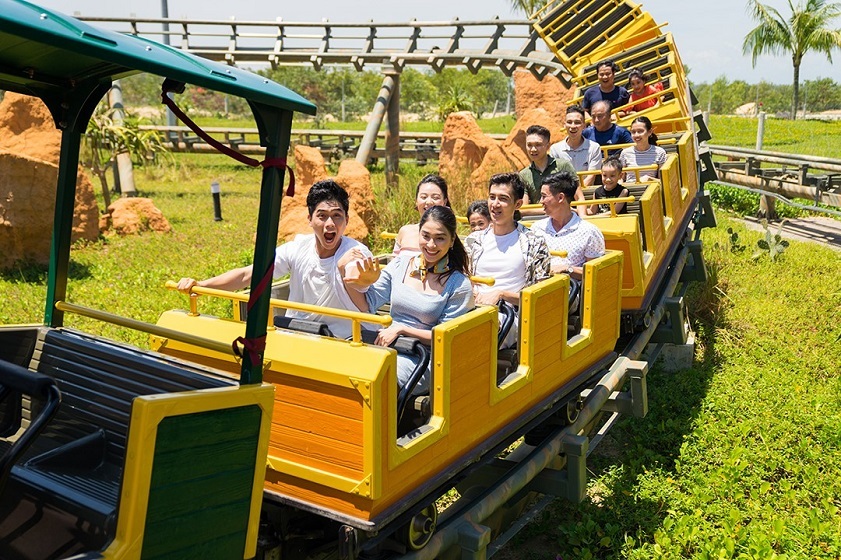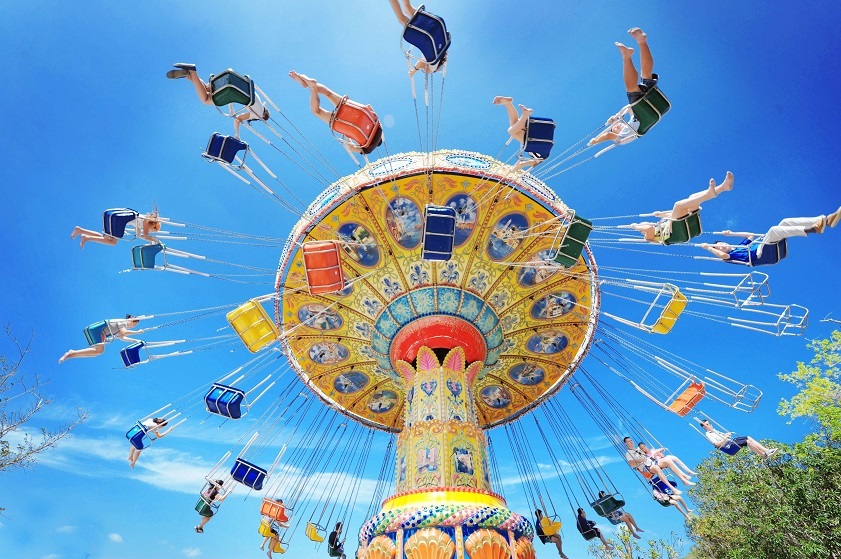Vietnam religions are a crucial part of Vietnamese culture that travelers should explore on their Vietnam travel. This article will get you covered with the essential information about Vietnam religions and beliefs, top famous religious sites throughout the country, and the etiquette for visiting these sacred places.
1. Introduction to Vietnam religions and beliefs
Vietnam is a country with a diverse and rich religious landscape, including both the indigenous religion and other popular religions. Despite Vietnam’s official atheism, the majority of its people follow one or more forms of religion. As a result of the country’s substantial philosophic influence from China, India, and Europe, Vietnam religions today are a melting pot of ideologies and rituals, from which different religions emerge.
The majority of Vietnamese people believe in “Tam Giao” (the Three Teachings), a synthesis of Buddhism, Confucianism, and Taoism. The indigenous Vietnam religious beliefs are also furthered by the traditions of spirit and ancestor worship.
Regarding major religions in the world, Vietnam is a multi-religion country. Buddhism and Christianity are the two main religions in Vietnam. Islam, Cao Dai, and Hoa Hao are some minor religions practiced in Vietnam.
1.1. What is the most common religion in Vietnam?
Apart from the indigenous beliefs, Buddhism is the main religion in Vietnam. It was brought to this country around the second century BC. Buddhism was the official Vietnam religion throughout the Ly Dynasty (1010 – 1214). Later, it was stripped of its role as an official religion of Vietnam, but continued to be practiced by the vast majority of the people and permeated Vietnamese culture.
Although a large number of Vietnamese people nowadays would describe themselves as Buddhists, not all of them actively partake in pagoda rituals.

Tam Chuc Pagoda – Southeast Asia’s biggest Buddhist pagoda located in Ha Nam, Vietnam (Source: Collected)
Mahayana Buddhism, which is also widely followed in China, Korea, and Japan, is a form of Buddhism that is commonly practiced in most Vietnam locations. This is different from Theravada Buddhism, which is practiced in the neighboring Myanmar, Laos, and Cambodia. Theravada Buddhism is widely practiced by Vietnamese people and the Khmer Krom in the Mekong Delta in the South.
1.2. Other major religions in Vietnam
1.2.1. Catholicism
Portuguese Catholic missionaries brought Catholicism to Vietnam in the 16th century, and it is today the most common form of Christianity in the country. When the Trinh lords (who ruled Northern Vietnam) and the Nguyen lords (who ruled Central and Southern Vietnam) were in power, Christians had to endure a truly bad period. The Nguyen lords were generally tolerant, in contrast to the Trinh lords who were antagonistic toward them. Christians hence tended to gravitate toward the Southern as opposed to the Northern regions of Vietnam.
Power dynamics have changed significantly since then. Christians in Vietnam are now able to openly celebrate holidays like Easter and Thanksgiving, as well as hold gatherings in churches thanks to a more tolerant attitude on the part of the government. Furthermore, Catholics in Vietnam are allowed to burn incense for their ancestors as long as the family altar is not placed above the altar of Jesus and the offering does not promote superstition.
1.2.2. Protestantism
Protestantism is another branch of Christianity in practice in Vietnam. In 1911, a Canadian missionary named Robert A. Jaffray brought Protestantism to Vietnam for the first time. A church was quickly founded in Da Nang following his arrival.
The Hmong, Thai, and Dao ethnic minorities who live in the northwest highlands are now estimated to make up more than half of all Protestants in Vietnam. Da Lat is another place that sees a large number of Protestantism believers in Vietnam.
According to the official government statistics of Vietnam religion percentage, this religion has grown to 1.5 million followers (or roughly 2% of the population) and 400 places of worship in Vietnam after about 120 years.
1.2.3. Islam
Islam was spread to the nations of Southeast Asia between the 11th and 12th centuries. In Vietnam, this religion is mostly practiced by the ethnic Cham people in Southern Vietnam.
There are two branches of Islam in Vietnam nowadays. The first is the Chan Bani (a blend of Islam and Brahmin that had been the primary religion in Champa before Islam), and the second is Cham Islam, which is somewhat similar to Islam worldwide. Most Cham Bani believers hail from Central Vietnam, whilst Cham Islam followers are concentrated in the southern part of the country.
1.2.4. Cao Dai
Cao Dai is the local Vietnam religion that was founded in South Vietnam in the 20th century. Caodaism is a monotheistic religion that attributes its origin to God rather than any prophet or Buddha. The aim of this religion is to liberate oneself from the cycle of birth and death. Its believers practice nonviolence, vegetarianism, ancestral worship, and prayer sessions.
The faith in “priests”, or divine intermediaries who could communicate with God and give adherents instructions, is another peculiar characteristic of Caodaism. Caodaism has about 8 million followers in Vietnam and another 30,000 or so in Australia, America, and Europe.
1.2.5. Hoa Hao
Another local Vietnam religion to mention is Hoa Hao, also known as Hoahaoism. It is a reformed branch of Buddhism that belongs to the Buddhist ministry. Hoahaoism places a greater emphasis on lay people practicing Buddhism at home, particularly farmers.
In Vietnam, there are approximately two million followers of Hoahaoism. More than 90% of the population in the Mekong Delta, where it originated, practices this Vietnam religion. Hoahaoist families pray at a simple altar made of brown cloth every morning and evening. Just freshwater, flowers, and incense are used for worship, without bells or gongs.
Hoa Hao followers are encouraged to participate in communal services on the first and fifteenth days of each lunar month, as well as on other Buddhist holy days.
2. What are the worth-seeing religious destinations in Vietnam?
Famous for its freedom of religion, Vietnam is undoubtedly an appealing destination for religious tours. If you love to explore Vietnam religions but are unsure where to go, the sacred religious sites below will be a great choice.
2.1. Ngoc Son Temple
Ngoc Son Temple is one of the most widely known temples in Hanoi. It is located on a small islet at Hoan Kiem Lake, connected to the lakeshore by a beautiful crimson bridge called The Huc. General Tran Hung Dao (who routed the Mongols in the 13th century), La To (the patron saint of doctors), and the scholar Van Xuong are honored in this temple. If you happen to be in Hanoi and want to learn more about the folk Vietnam religion, this place is undoubtedly a must-stop.
2.2. Linh Ung Pagoda
In Da Nang, there are three pagodas named “Linh Ung”, and the one on Son Tra Peninsula is the most well-known. It is one of the top Da Nang tourist attractions.
Linh Ung Pagoda Da Nang is dedicated to Buddhism Vietnam religion. The pagoda is perched on the peninsula, facing the East Sea with the stunning Hai Van Pass in the background. Up to 20 hectares in size, the space is beautifully ornamented with several statues and plants, giving off a relaxing atmosphere.
Linh Ung Pagoda is also home to Vietnam’s tallest statue of a Bodhisattva (67 meters high), which is placed on a massive lotus platform. This pagoda is a great place to learn about Buddhism – the dominant religion in Vietnam, as well as immerse yourself in the sacred and tranquil atmosphere here.
2.3. Thien Hau Pagoda
Thien Hau Pagoda is the worship place for Thien Hau Thanh Mau (Mazu) – a Chinese sea goddess. For those eager in exploring the influence of Chinese culture on the practice of the indigenous Vietnam religion, Thien Hau Pagoda in Saigon is a worth-visiting place.
Thien Hau Pagoda was established in the 18th century by the Chinese-Vietnamese community in Saigon Chinatown, which is in District 5 today. This temple is one of the oldest Chinese temples in Vietnam. Several sculpted lines, sculptures, artifacts, and cultural vestiges still remain in this holy place.
2.4. Thien Mu Pagoda
Hue is renowned as the top Vietnam destination for Buddhists thanks to its large number of sacred ancient pagodas. Thien Mu Pagoda, which is located only 4 kilometers to the southwest of the ancient citadel, is one of the best places to take a pilgrimage in Vietnam.
Built on a hill overlooking the poetic Perfume River, Thien Mu Pagoda is a reputable landmark of Hue. Established in 1601, it used to be a prominent site for Buddhism under the Nguyen Dynasty. It is the oldest Buddhist pagoda in Hue and still retains its ancient structure and spectacular works.
2.5. Nha Trang Cathedral
The Christ the King Cathedral (also called Nha Trang Cathedral) is an ideal place for Catholics to visit in Nha Trang. It serves as the mother church for the Vietnamese Catholic Diocese of Nha Trang. French missionaries constructed this Gothic Revival structure in 1886 with the intention of using it as a parish. The church turned into a cathedral in 1960.
Nha Trang Cathedral is home to an astounding number of stained glass windows that depict the scenes of the life of Jesus and saints, including some notable French saints like St. Joan of Arc and St. John Vianney.
3. Proper etiquette for visiting religious sites in Vietnam
- Dress modestly, avoid revealing clothes
- Remove your shoes, hat, and sunglasses upon entering the sites
- Lower your voice and avoid inappropriate conversations
- No smoking or chewing gum
- Show respect to the people working at the sites
- Do not disturb others while they are praying or meditating
- Do not lean again, sit, or climb on the statues and monuments
- No kissing or hugging
- Avoid burning too much incense, one stick is enough
Vietnam religion is just a part of the vibrant Vietnamese culture. Traveling to Vietnam, you will have the opportunity to discover the beauty of Vietnamese nature, culture, and people. It is also a wonderland for a relaxing vacation. If you are planning a Vietnam visit, remember to add the following destinations to your itinerary to enjoy the utmost entertainment in this beautiful land.
- Vinpearl Aquarium and VinKE in Hanoi: Visitors to this amusement haven get access to an intriguing world of aquatic life as well as a number of fascinating games for nonstop enjoyment.
- VinWonders Nam Hoi An: Located close to Hoi An Ancient Town, it is the ideal place to experience the essence of Vietnamese culture, tour around Vietnam’s first and biggest River Safari to see the wildlife, and test your prowess in many fascinating games.
- VinWonders Nha Trang: This is an amusement complex on Hon Tre Island, where you will be overwhelmed by an incredible collection of exhilarating games and ground-breaking records.
- VinWonders Phu Quoc: This Vietnam’s largest theme park in Phu Quoc offers a variety of thrilling activities and breathtaking displays, making it the dream location for anyone seeking a memorable and enjoyable time in Vietnam.
>>> Book tickets of VinWonders Phu Quoc, Nha Trang, Nam Hoi An, Vinpearl Aquarium and VinKE to enjoy a fascinating outing with your families and friends!
Although Vietnam is an atheist country, most Vietnamese people practice folk Vietnam religion. Other religions such as Buddhism, Catholicism, Caodaism, Hoahaoism, etc. are also widely present across the nation. Hopefully, this article has provided you with an insight into the religions in Vietnam, so you can be well prepared for your upcoming Vietnam culture tour.
>>> Book tickets of VinWonders Phu Quoc, Nha Trang, Nam Hoi An, Vinpearl Aquarium and VinKE to enjoy endless relaxation in Vietnam!
 en
en







 Tiếng Việt
Tiếng Việt  中文 (中国)
中文 (中国)  한국어
한국어 
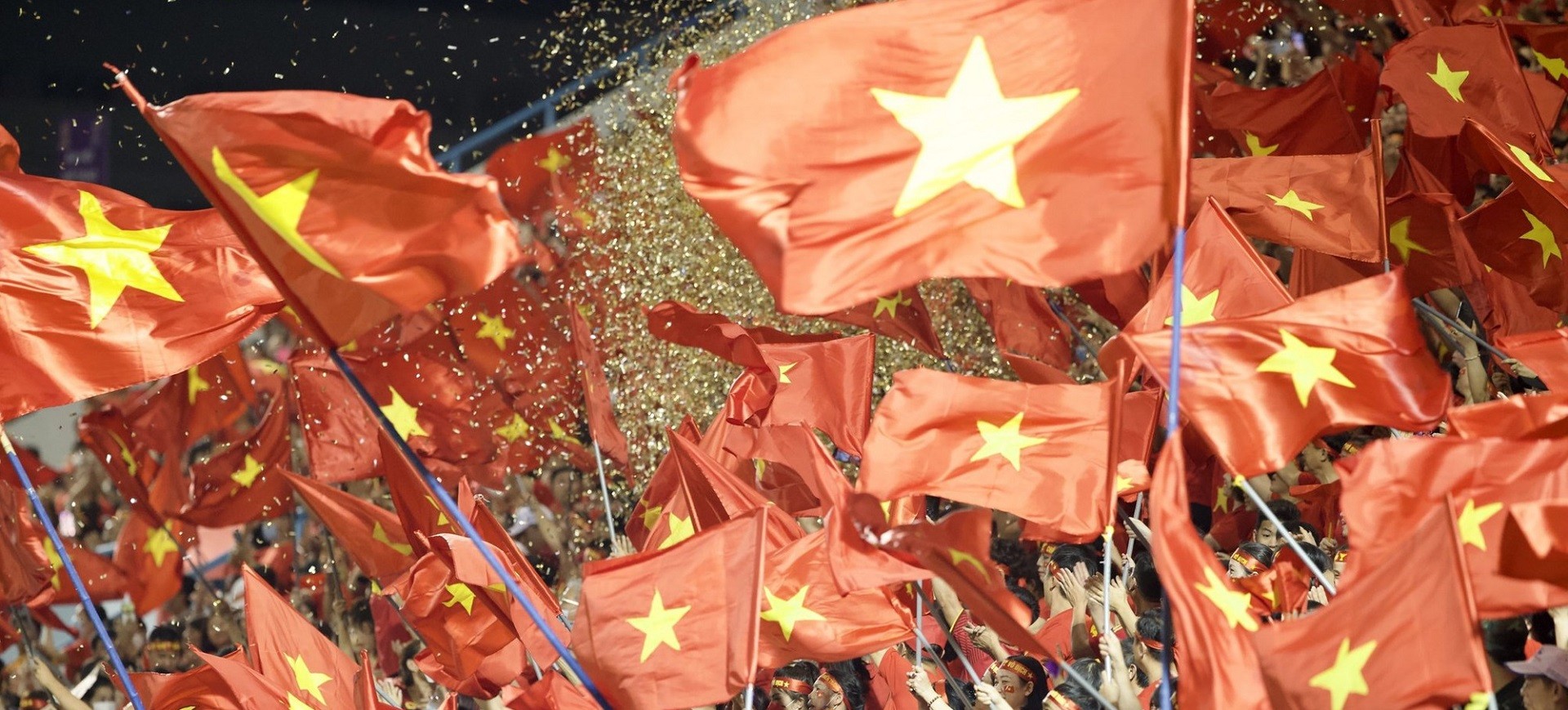
 25/03/2023
25/03/2023 1002 views
1002 views
